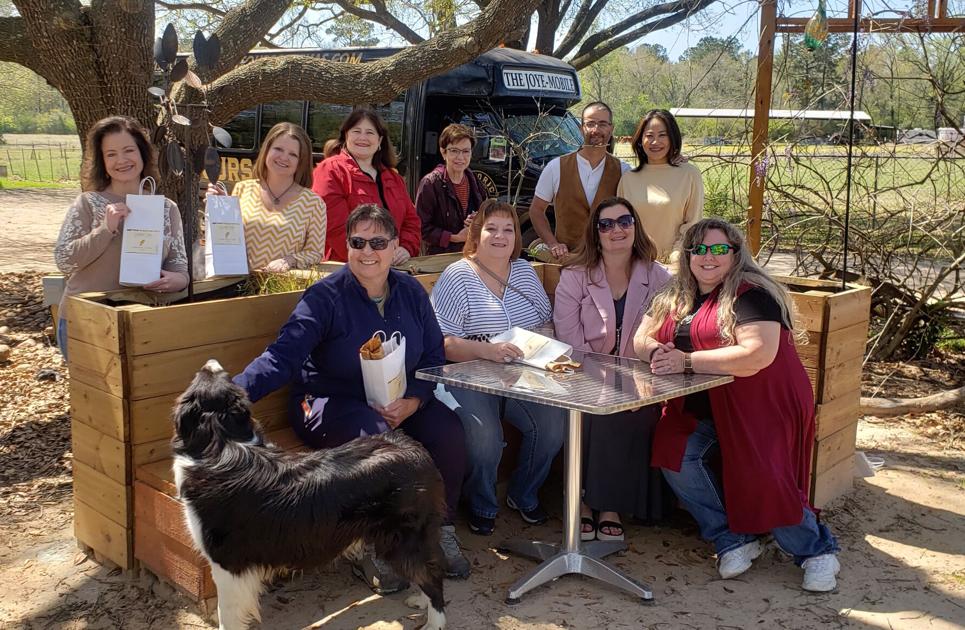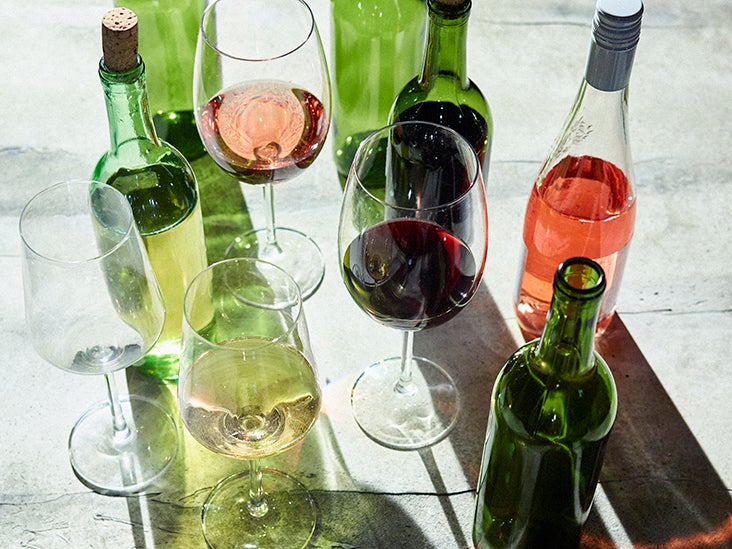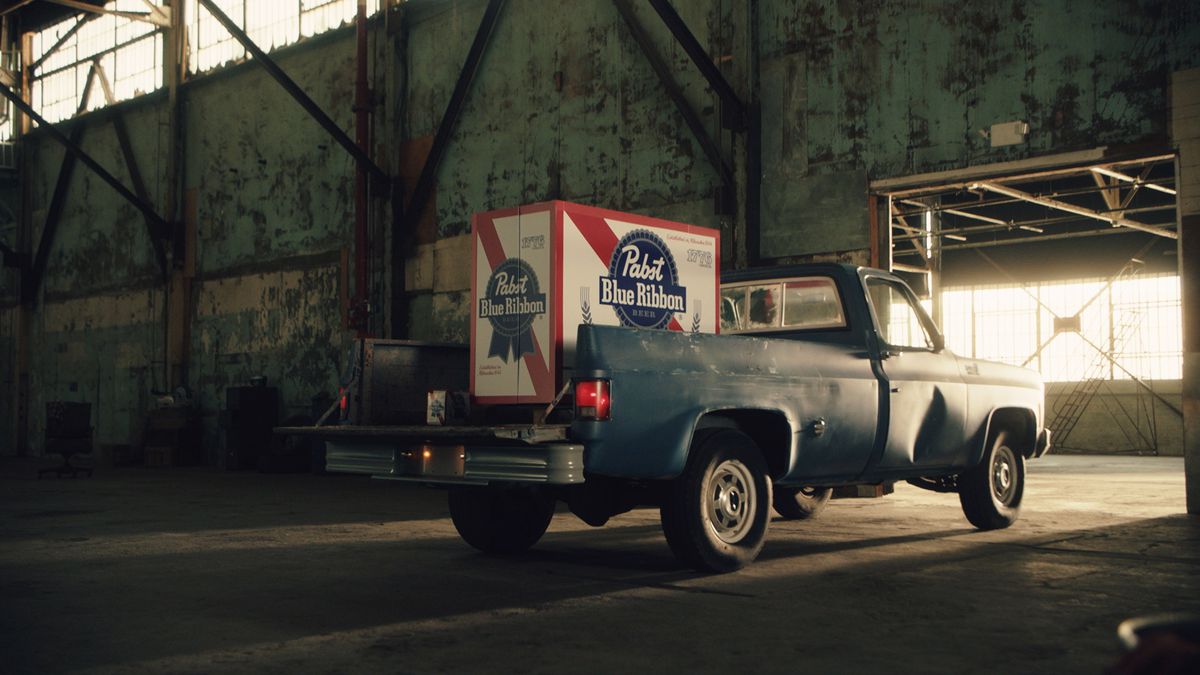This episode of “Wine 101” is sponsored by Fleur de Mer Rosé. Throughout the rolling hills and valleys of Provence, fields of lavender thrive in the warm sun and fresh, crisp, seaside air. In French, Fleur de Mer means “Flower of the Sea,” and our wine celebrates the region’s famed flowers as well as its historical tradition of crafting incredible rosé wines. Each sip of Fleur de Mer Rosé engages the senses with bright fruit notes, crisp acidity, and a clean, dry finish. For a taste of true Provencal rosé wine, reach for Fleur de Mer Rosé.
In this episode of “Wine 101,” VinePair tastings director Keith Beavers discusses France’s Provence region. Listeners will learn about all the appellations that make up the region, including the largest rosé-producing appellation, Côtes de Provence. Beavers takes listeners through the five red wine varieties used to make the rosés in Provence: Grenache, Cinsault, Syrah, Mourvèdre, and Tibouren.
Tune in to become an expert on Provence and its wines.
Listen Online
Listen on Apple Podcasts
Listen on Spotify
Or Check out the Conversation Here
Keith Beavers: My name is Keith Beavers, and we just bought our first house. I know, it’s very exciting. Do you guys know there’s a lot to do when you own a house? It’s a lot.
What’s going on, wine lovers? Welcome to Episode 14 of VinePair’s “Wine 101” podcast, Season 2. My name is Keith Beavers. I’m the tastings director of VinePair, and how are you? Here we are. Provence. It’s time to figure this all out. We all love the pink stuff, and this is an O.G. moment. What is it about Provence?
I mean, who does not associate pink wine with Provence? Even if you don’t know where Provence is, even if you don’t even understand the whole Provence thing, you probably know there’s pink wine and a lot of it coming from Provence. It just so happens to be the southeastern part of France, mostly in a department called Var. I’m probably butchering the pronunciation of that.
Provence does produce the majority of the pink wine or rosé in France, and they produce a lot of it. In 2016, over a million cases of Provence rosé — that’s 12 bottles per case — a million cases of Provence rosé were exported into the U.S. That’s just the U.S. Imagine how much they drank in Provence. It’s insane. Even though this is the home or a home of rosè or pink wine, rosé didn’t begin in Provence. I have an episode in Season 1 all about how rosé is made and all that. The idea of rosé has been around for a long time. It’s just this area, because of its climatic geological position, it makes sense to make pink wine. There are 3,000 hours of sun a year in the region of Provence. That’s a lot of sun hours.
Also, even though this region does get up into some hilly areas and higher elevations towards the north, it’s basically the most Mediterranean climate. It is the Mediterranean climate. This is where the Mediterranean climate idea came from. Not really but it feels like it. It’s warm and it’s near the sea. A lot of seafood. There’s a lot of garlic, a lot of aioli going on over there. It makes sense that nice, crisp, high-acid wine would do well with the food and the climate and the lifestyle of the area. Maybe you say, “Well, Keith,” and I would say, “What’s up?” “What about white wine? Why do rosé, why not just do white wine?” I’ll say “Oh, good question.”
In the region of Provence, the people there also make red wine, and they make white wine. Just not as much as they make pink wine. The thing is, this area of France has been producing wine for such a long time, there’s not even a precise date to show when the vine began being cultivated in this area. This location in France, in the Mediterranean near northern Italy, was a land that was fought over for hundreds and hundreds of years.
The Greeks got there first, then the Gauls had a run at it. Then there are all these other eras. You had the Saracens, you had the Carolinians. Of course, the Roman Empire had a thing. There are the counts of Toulouse. The Catalans, René of Anjou, the house of Savoy, and the kingdom of Sardinia. All of these eras existed and occupied this area. That’s a lot of humans, and that’s a lot of vines being exchanged over a very long time. The variety of grapes that thrive in the Provence region are a result of the survival of the fittest varieties that have been so successful that they kept them around and made wine with them. What is really wild about the Provence region is, in Côtes de Provence alone — which we’ll get to in a second — Jedi wine master Jancis Robinson states in “The Oxford Wine Companion” that Côtes de Provence, which is one of the wine regions in this area, has no less than 13 varieties they can use in their wine. It’s very similar to a wine region just north of Provence called the southern Rhône, which we talked about before.
There are vines all over this part of France or vines of different varieties all over this part of France. This is crazy because this is history. The connection between this area and Spain and Italy is pretty intense. I wish I had time to talk about it. Interestingly enough, it does have to do with Piedmont in Barolo, which is crazy. However, the shortlist of varieties that are used predominantly in Provence are more of a reflection of the most recent occupations of that land, specifically Italy and the island of Sardinia. Interestingly enough, at one point Spain occupied Sardinia. Italy and Spain have both occupied Sardinia. There is a story that goes that there’s a grape called Grenache from Spain, and there’s a grape called Cannonau in Sardinia. Those two varieties are the same, and it has to do with the Spanish bringing, they think, the Cannonau grape to Sardinia. Being that Provence was once part of the kingdom of Sardinia, it would make sense that the varieties that were thriving on the island of Sardinia would be making their way over to Provence.
I know that’s crazy and I can’t get into a lot more of it, but I just want to give you a little slice of that. OK, one more thing. On the eastern coast of Spain, there is a wine region called Jumilla, and that region specializes in a specific variety they call Monastrell. It ripens, survives, and thrives there because of the warmth and the sun. It loves warmth and loves sun. Over in southern France, specifically in Provence, because we’re talking about Provence, there’s a variety that they use called Mourvèdre. Mourvèdre is Monastrell. There’s another connection there. Also, Syrah is a big deal in Provence and that is because the Rhône is just north. I’m going to list all these grapes and it’s going to be very clear. I just want to give you guys a sense of the density of the history here without going into all the crazy cool stories.
The wine-growing region of Provence consists of nine appellations. One of those appellations, the largest one, has four sub-appellations within it. Five of those appellations we see pretty regularly on the American market. The other four are very small and we don’t often see them on the American market. I’m not going to go into those small appellations because I don’t really have the time but we’re going to talk about what you will see. Also, as I’ve stated before, the wine-growing region of Provence produces red, white, and rosé. Rosé being the lion’s share. The big old lion of the region. In a lot of cases, the red and the white doesn’t really make it to the United States. If they do, it’s in very small quantities. Now, there is one appellation that I’m going to talk about that’s primarily red that does make it here, but for the most part, we’re talking about rosé today across the nine wine-growing appellations of Provence.
Primarily, there is a list of five red wine varieties that are used to make the rosés of this area. There’s Grenache from Spain. This is the most planted variety in Provence. The second planted grape variety, red, is a grape called Cinsault. This is native to France, and it’s usually used as a blending variety, but it can do more. Then there is Syrah, the third most planted variety in Provence. As we know, that comes from the Rhône, which is just north of Provence. Then, you have Mourvèdre, otherwise known as Monastrell, on the eastern coast of Spain. This is not planted as much as the other varieties because Monastrell or Mourvèdre is picky when it comes to the sun. It needs warmth. There are only certain places that it does really well, and we’ll get into that. The last variety, I think, is one of the most fun varieties, if you will. It’s being used more and more in Provence. It once was not used, but now it’s coming back. It’s a grape that’s so old, there are two names for it and no one knows which was the original name for it.
Over in Liguria, which is just over the border into Italy from this region of Provence, there’s a grape called Rossese di Dolceacqua. It is an awesome red wine, soft, smooth, similar to a Merlot. It’s awesome stuff. Over in Provence, they call it Tibouren, and it has similar characteristics to that variety. It is the same variety, but no one knows what’s the original name. Tibouren is being used more often in the rosé blends. It gives a nice fat paunch, if you will, to the rosés. As I’ve mentioned before, the Provence wine-growing region is in the southeastern part of France on the Mediterranean, and it surrounds a bunch of cities. The main city that it surrounds is Marseille. I mention that because when the ancient Greeks got to this land, they actually created that city which was called Massalia.
With the large port town of Marseille on the coast being the anchor of this, if you go north of Marseille, then east and west, spreading out in both directions, that is the Provence wine-growing region. Going east all the way to the border of northern Italy and going west to the border of a region called Languedoc, which we’ll talk about in some other episode. Oh, my gosh. It’s an amazing place. Across the nine appellations of Provence, the five red wine grape varieties that I mentioned are used in different proportions throughout, with Grenache being obviously the most popular. I say this because there’s a lot of proportioned changes between the appellations because these are the main varieties that are used. I’m not going to go into the different proportions per appellation because I think we would both get very dizzy and may not even retain it. Just know that these are the varieties that are blended into the wines you’re going to see on the shelf in the United States.
The rosé we see the most of here, and the largest appellation in Provence, is Côtes de Provence. This appellation has a whopping 50,000 acres of land under the vine. It’s huge, and it’s mostly concentrated in the eastern side of the region, but it also has pockets all over the place. There are pockets over in the west, in the south, and the far north. The reason why it’s called Côtes de Provence — remember the Burgundian episode, Côte d’Or, slope or hill. In this area, there are a couple of what I call mini-massifs. The reason I say that is because we talk about the big massifs when we talk about Burgundy. Well, these other massifs just aren’t as big, but it does create hilly geography as you go north in Provence. Obviously, the majority of the wine here is pale pink and dry rosé.
They like to concentrate on Grenache and Cinsault. Again, they do other varieties. The ones that I listed, they’re actually playing around with Tibouren more than usual these days. Only about 15 percent of this area is red wine, but we don’t even see it here. I don’t know if you guys have, but I haven’t had a red wine from Côtes de Provence yet. Côtes de Provence is large and it’s spread out, but it does have four sub-appellations. Usually, when you see sub-appellations, we’re talking about terroir, right? We’re talking about different soil compositions, different exposures to the sun give different varieties different characteristics. These areas have proven over time that they’re different. Therefore, they’ve gotten their own. It’s similar to a village, if you will.
If you listen to previous episodes for Burgundy or Rhône, where they can say Côtes de Provence and they can actually put the name of the village on the label. It’s only four of them, and you know I’m going to mess up these names, but I have to tell you because you’re going to see them and I want you to know what they are. You’re going to see Côtes de Provence on the label and then either underneath that or just in big words above that is the name of the village. One of the villages is called Fréjus. It’s located more on the eastern side of the Provence region. It’s a small town, about 650 acres. They do red wine there, but mostly rosé, of course, and the white wine is just general Côtes de Provence. They don’t even make enough white wine to have it part of the village. You could also see Côtes de Provence La Londe, which is located more on the Mediterranean coast. This is one of those spots where it’s warm enough that Mourvèdre can ripen fully. Here they do something called a GSM blend, which is Grenache, Syrah, and Mourvèdre. Again, not everyone does that, but it’s popular there.
Also, you might see Côtes de Provence Pierrefeu, and the wines here are just known because it’s very terroir-driven in that they have various soil types that really define the area. Then there’s the last one, which is located in the west as well, but just north of Marseille. It’s known for its limestone soil, which is a big deal in wine, which we talked about in the Champagne episode also. Cezanne and Picasso did a lot of work in this area. It’s called Côtes de Provence Sainte-Victoire. Since Côtes de Provence is so big, you will see some white wine out there. I’ll run down a quick list of what they do with white wine grapes. They have Claret, which is a blending variety. Sémillon, which is a sweet grape that’s native to Bordeaux. Ugni Blanc, which is a very well-known variety for distilled wine spirits. Then, Rolle, also known as Vermentino, which is sometimes blended into the rosé. That’s what they do. They’re very clean, very quaffing, very good white wines.
The next big region, and this is an interesting one because you’re going to see it a lot. It’s very hard figuring out how to pronounce it. It’s pronounced Coteaux d’Aix-en-Provence. From what I understand, aix is the old Latin word or term to refer to water or flowing water. Aix is actually a town in this region. I don’t know, it’s a little bit confusing, but it’s cool. Coteaux d’Aix-en-Provence. Feels good to say it when you get it. Am I getting it? I don’t know much French.
Anyways, the appellation is named after the town of Aix, and the appellation doesn’t really surround the town so much as it does expand from the western part of Aix going west, about 10,000 acres worth of vines, and that is Coteaux d’Aix-en-Provence. The big five red grapes are here, but they’re also using a little bit of Cabernet Sauvignon, which is interesting. Also a grape called Carignan, which is a very old varietal in this region, which we’re going to talk about more in the Languedoc episode, but they’re not using it much. The big thing about this region, this appellation and the reason why you’re gonna see a lot of it on the American market is this is a big cooperative region. There are cooperatives here, and they pump out a ton of rosé and it’s going to come onto the market and say Aix-en-Provence.
The last rosé region in Provence I want to talk to you about is actually coming more and more onto the market. We’re gonna start seeing more of it. It’s an enclave that’s been cut out of the large Côtes de Provence region called Coteaux Varois. I think I’m saying that right. It’s named after the Var department, which most of this area is in. It’s not huge. It’s a little over 2,500 acres under vine, but it’s known for its pockets of limestone. Limestone is a very popular soil for vines. Also, it has little warm areas in it where Mourvèdre can actually ripen fully. That’s the thing in Provence. It’s hard to find places where Mourvèdre ripens, but when it does, it’s special.
The last place I want to talk about is not known for rosé in Provence. It’s known for red wine. It’s not big. It’s very small. From what I understand, urban development in this area, because it’s so close to the coast, is getting to the point where it’s hard for this little region to expand. It’s odd because they don’t produce a lot of wine here, but it is a very prominent wine on our market. It’s a little bit expensive, but if you get a chance to try this, it’s awesome. It’s a little appellation in Provence called Bandol, which is named after the port town it surrounds. It only has about 1,500 acres under vine, but what’s very special about Bandol is it’s the one place in Provence that can really ripen Mourvèdre. The majority of the wines, again the five grapes are there, but the majority of the wine that is made is red wine. Of those red wines, the majority of the blend is Mourvèdre. Actually, 50 percent of the blend is Mourvèdre. These wines are soft, lush, and smooth. When Mourvèdre ripens properly, it is this odd, beautiful thing. It’s deep, lush, and it’s medium body, but it also has a perception of fullness to it. There are some tannins. It’s wild, and the wines come from Bandol age for a long time, but also they drink really well in their youth. It’s a very wild thing.
Having the ability of Mourvèdre to ripen, they actually have all the vineyards that are facing directly south. They want as much warmth from the sun as possible in those 3,000 sun hours annually in Provence to really make these grapes ripen. The grapes are grown on terraces, they’re hand-harvested and blended. The wines from this area spent about 18 months in barrel before they’re released. Oh, wow. Look, we have aging requirements now. With rosé, there aren’t aging requirements in Provence. There are winemakers that are trying to make roses that will age, but there’s no requirement for it. Rosé is seasonal, especially here in the United States. In Provence, they drink rosé all the time because it’s 3,000 sun hours a year and the winters are very mild. They’re rolling it over every year because rosé is always available, but it doesn’t age. I go over all that on the episode of how rosé is made in Season 1.
OK, wine lovers, that’s Provence. That really breaks it down and gives you a sense of what’s available, what you’re going to see, how to pronounce the things, what are the varieties that are in these blends. Next time you’re out there, just try rosés from all over Provence and get a sense of what you dig mostly from that place. If you see any red wine from Provence, tag me @VinePairKeith on Instagram because I want to see it.
@VinePairKeith is my Insta. Rate and review this podcast wherever you get your podcasts from. It really helps get the word out there. And now, for some totally awesome credits.
“Wine 101” was produced, recorded and edited by yours truly, Keith Beavers, at the VinePair headquarters in New York City. I want to give a big ol’ shout-out to co-founders Adam Teeter and Josh Malin for creating VinePair. And I mean, a big shout-out to Danielle Grinberg, the art director of VinePair, for creating the most awesome logo for this podcast. Also, Darbi Cicci for the theme song. Listen to this. And I want to thank the entire VinePair staff for helping me learn something new every day. See you next week.
Ed. note: This episode has been edited for length and clarity.

















 April 29th – Corning, NY:
April 29th – Corning, NY: 




